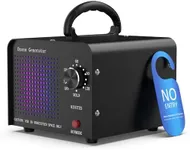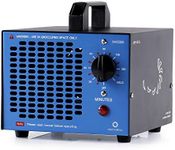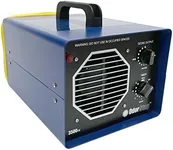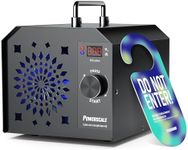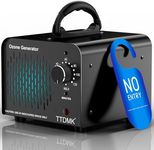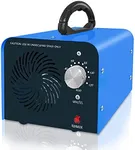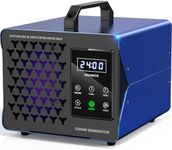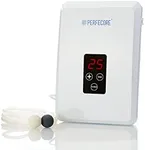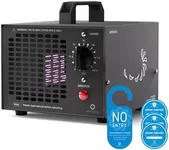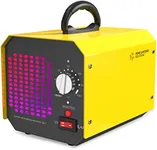Buying Guide for the Best Ozone Machines For Odors
Ozone machines, also known as ozone generators, are devices that produce ozone (O3) to help eliminate odors, bacteria, and viruses from the air. They are commonly used in homes, offices, and vehicles to improve air quality. When choosing an ozone machine, it's important to consider several key specifications to ensure you select the right model for your needs. Understanding these specifications will help you make an informed decision and get the best performance from your ozone machine.Ozone OutputOzone output is the amount of ozone that the machine can produce, usually measured in milligrams per hour (mg/h). This spec is important because it determines the effectiveness of the machine in eliminating odors and purifying the air. Lower output (up to 500 mg/h) is suitable for small spaces like cars or small rooms. Medium output (500-1000 mg/h) is ideal for medium-sized rooms or offices. Higher output (1000 mg/h and above) is best for large spaces or severe odor problems. Choose the ozone output based on the size of the area you need to treat and the intensity of the odors.
Timer FunctionA timer function allows you to set the machine to run for a specific period, which is important for safety and convenience. Ozone can be harmful to breathe in high concentrations, so it's crucial to control the duration of its operation. Basic timers offer simple on/off settings, while advanced timers provide more precise control with multiple time settings. If you need to treat a space regularly or overnight, a machine with a programmable timer is a good choice. For occasional use, a basic timer may suffice.
Coverage AreaCoverage area refers to the maximum space that the ozone machine can effectively treat, usually measured in square feet or square meters. This spec is important to ensure the machine can handle the size of the area you need to purify. Small coverage (up to 500 sq ft) is suitable for cars, small rooms, or bathrooms. Medium coverage (500-1000 sq ft) works well for larger rooms or small apartments. Large coverage (1000 sq ft and above) is ideal for entire homes, offices, or commercial spaces. Match the coverage area to the size of the space you need to treat.
Fan SpeedFan speed determines how quickly the ozone is distributed throughout the space. This spec is important for ensuring even and efficient ozone distribution. Machines with adjustable fan speeds allow you to control the intensity of the ozone output. Low fan speed is suitable for small spaces or when a gentle treatment is needed. High fan speed is better for larger areas or when a quick and thorough treatment is required. Choose a machine with adjustable fan speeds if you need flexibility in treating different spaces.
PortabilityPortability refers to the ease with which you can move the ozone machine from one location to another. This spec is important if you need to use the machine in multiple areas or transport it frequently. Lightweight and compact machines are easier to carry and store, making them ideal for use in cars, small rooms, or for travel. Larger machines with handles or wheels are better for treating large spaces but may be less convenient to move. Consider your need for mobility when selecting an ozone machine.
Safety FeaturesSafety features are designed to protect users from the potential hazards of ozone exposure. This spec is important because ozone can be harmful if inhaled in high concentrations. Common safety features include automatic shut-off, ozone level indicators, and child locks. Machines with automatic shut-off will turn off after a set period, reducing the risk of overexposure. Ozone level indicators help you monitor the concentration of ozone in the air. Child locks prevent accidental operation by children. Choose a machine with the necessary safety features to ensure safe use in your environment.


